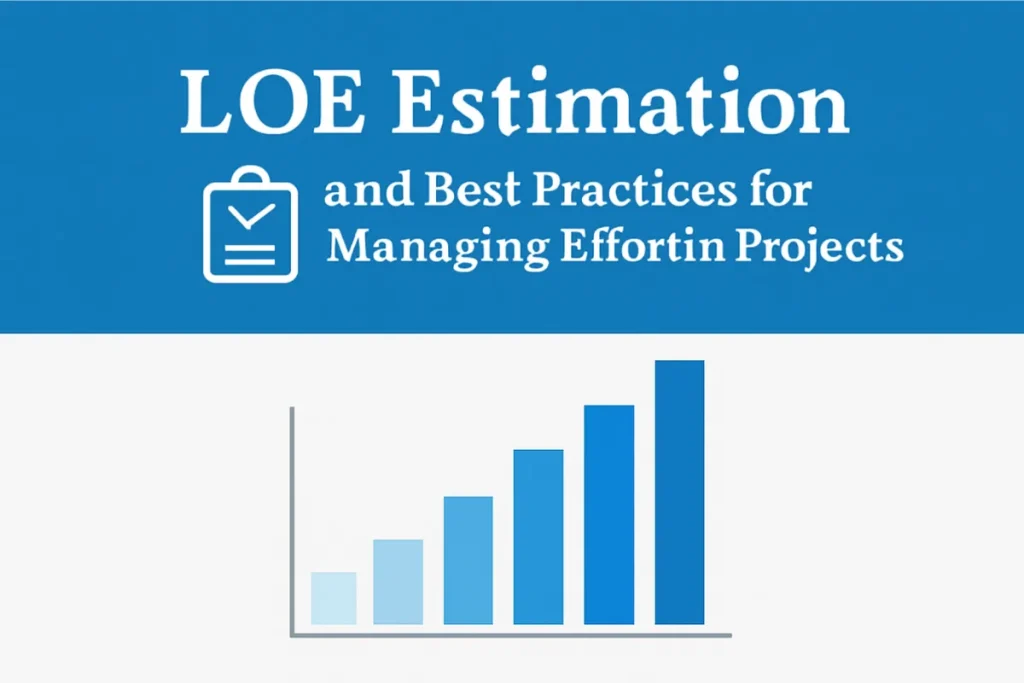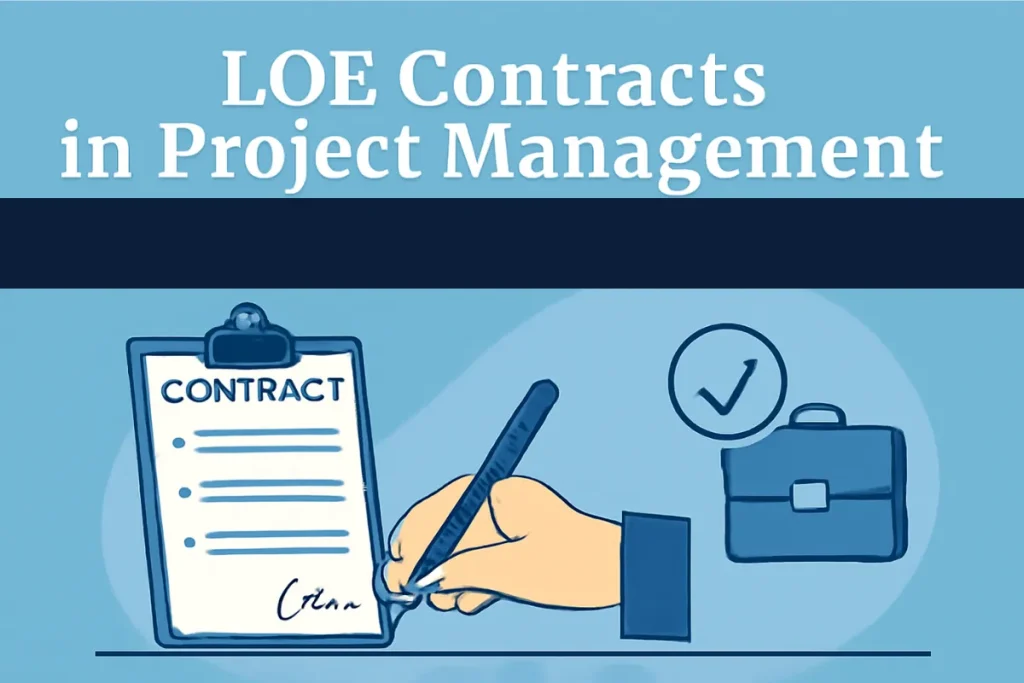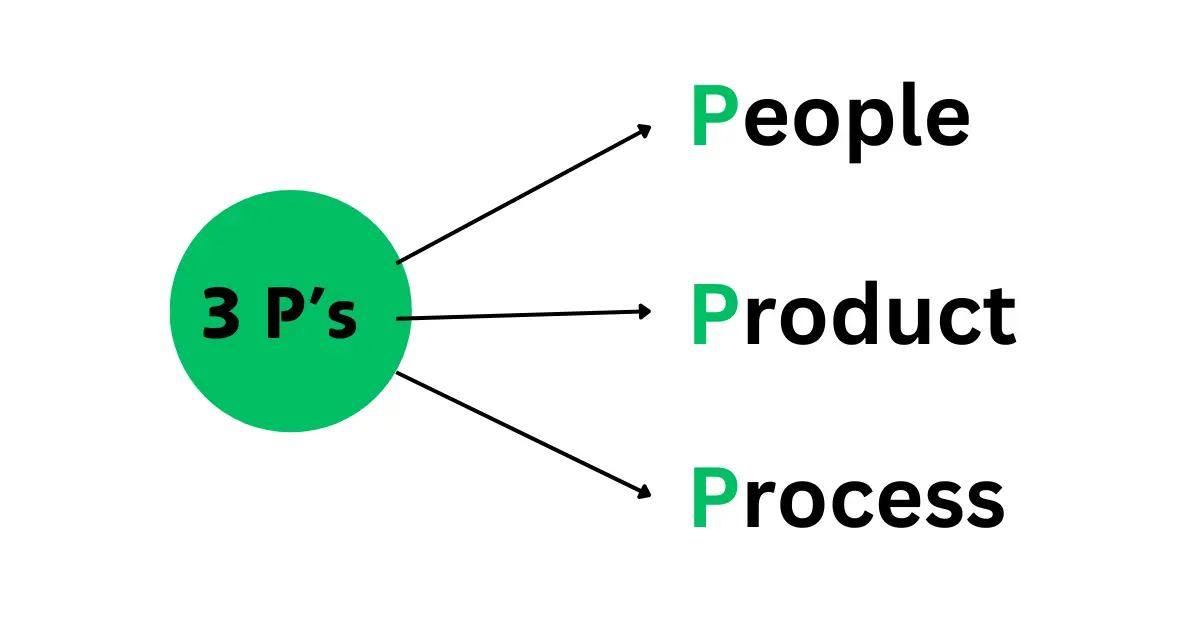What is LOE? Understanding the Meaning, Importance, and Application of Level of Effort
LOE, or Level of Effort, is a crucial concept in project management that refers to the amount of work required to complete a task or activity. It is often measured in person-hours and is typically associated with tasks that are necessary for the project’s success but don’t directly contribute to deliverables, such as administrative support or ongoing maintenance.
Accurate estimation of LOE is essential for effective project planning. It helps ensure that resources, time, and budgets are allocated appropriately. What is LOE? Understanding LOE can also assist project managers in managing stakeholder expectations and tracking progress throughout the project lifecycle.
What Does LOE Stand For? Understanding the Different Definitions

LOE is an acronym that stands for multiple terms, each significant in different contexts. The most common meanings are Level of Effort and Letter of Explanation, but the term can also be used in other fields, such as Lease Operating Expenses.
Level of Effort (LOE) in Project Management
What is LOE in project management? In project management, LOE refers to the amount of work needed to complete an activity, often measured in person-hours. These activities typically support the overall project but do not produce tangible deliverables. Examples include administrative tasks, regular support, and maintenance. Level of Effort is important for estimating project timelines, determining resource allocation, and managing the project budget. Accurate estimation of effort is crucial for ensuring that project goals are met within the allocated resources.
Level of Effort tasks are often less critical to the project schedule as they are not on the critical path. However, they are still essential for maintaining project success and ensuring that resources are used efficiently. Understanding the level of effort required for each task allows project managers to allocate appropriate resources and adjust plans when necessary.
Letter of Explanation (LOE) in Financial and Legal Contexts
In addition to Level of Effort, LOE can also stand for Letter of Explanation. In financial or legal contexts, this letter is used to explain or clarify certain aspects of a situation. For example, in mortgage applications, an LOE may be required to explain gaps in employment history or irregularities in bank transactions. The purpose of the LOE is to provide transparency and give context to issues that might otherwise raise questions.
In legal or financial documents, an LOE can be used to provide additional information to support a claim, justify an action, or offer clarification regarding certain financial events. Letters of Explanation are often used to build trust and ensure all details are accurately represented.
Other Less Common Meanings of LOE
While Level of Effort and Letter of Explanation are the most common uses of the term, LOE can also have other meanings depending on the industry. In the oil and gas industry, LOE stands for Lease Operating Expenses, referring to the costs associated with maintaining and operating oil leases. This includes expenses for equipment, personnel, and maintenance services.
In some less common contexts, LOE may also refer to “love” (a Scottish term) or other specialized terms depending on the field in which it is used. While these meanings are not as widespread, they highlight the versatility of the acronym.
Understanding these different meanings helps clarify the term LOE’s application across various industries. Whether used in project management, finance, or the oil and gas sector, LOE plays a crucial role in estimating work effort, explaining financial situations, or tracking operating costs.
LOE in Project Management: The Key Role of Level of Effort
What is LOE in Project Management?

What is LOE in project management? In project management, Level of Effort (LOE) refers to the amount of work required to support a project. Unlike tasks that produce direct deliverables, LOE activities are essential for the overall success of a project, even though they don’t always result in measurable outcomes. These activities are often measured in person-hours and can include administrative work, support, maintenance, and other non-tangible tasks.
LOE in project management helps project managers plan, allocate resources, and estimate project timelines. Without accurate LOE estimation, projects risk becoming under-resourced or delayed. It is vital to ensure that sufficient time, effort, and personnel are allocated to these essential tasks, ensuring smoother project execution.
Understanding project acronyms, such as PMB, helps project managers align resources and clarify effort estimates for key activities.
Why LOE Matters in Project Management
Accurate LOE estimation is one of the cornerstones of successful project planning. Without a clear understanding of the work required, project managers may fail to allocate the necessary resources or underestimate the effort involved, leading to delays or cost overruns. Level of Effort helps ensure that each task, no matter how small or indirect, gets the appropriate attention and resources.
Additionally, LOE allows managers to better estimate costs and develop more accurate budgets for the project. By understanding the time and personnel needed for each task, project managers can make informed decisions about which activities need more attention and which can be minimized or outsourced. This also aids in balancing the overall workload of the project, preventing bottlenecks, and ensuring that the project remains on track.
Key Characteristics of LOE Activities
One of the key aspects of Level of Effort is that it generally doesn’t drive the project schedule. LOE activities do not typically affect the critical path of the project, meaning that they are not the determining factors in whether a project will be completed on time. However, their importance cannot be overstated, as they provide the necessary foundation for the more tangible, deliverable-driven tasks.
In many cases, LOE tasks are ongoing and may extend throughout the duration of the project. For example, administrative support may be required from the beginning to the end of a project, ensuring that documentation, communication, and reporting are handled efficiently. Similarly, maintenance tasks might be needed to keep certain systems running smoothly while the core project tasks progress.
Importance of LOE in Estimation and Planning
Understanding LOE and its impact on project planning is essential for project managers. Estimating LOE enables the team to identify the level of work required and allocate resources accordingly. If LOE is underestimated, it may lead to poor resource allocation, resulting in delays or unexpected costs. Conversely, overestimating LOE can lead to inefficiencies and unnecessary use of resources.
For example, in software development, LOE might involve activities like setting up servers, maintaining systems, or managing client communications—tasks that don’t result in a tangible deliverable but are necessary for the project’s success. Accurate effort estimation for such tasks ensures that the team is not overwhelmed and can maintain focus on higher-priority deliverables.
In software development, tasks like conducting a GPU test require significant LOE to ensure that the hardware meets performance expectations.
Using LOE in Project Management Tools
Many project management tools integrate LOE estimation features to help track and monitor the required effort throughout the project. These tools may include LOE templates, effort charts, or level of effort matrices, which can help visualize how much work has been completed and what remains. They allow project managers to quickly assess whether the allocated effort aligns with the project’s progress.
These tools also provide the flexibility to update LOE estimates as projects evolve, ensuring that the estimation remains as accurate as possible. Regular updates and monitoring of LOE help keep projects on track and within the budget, ensuring that any unforeseen issues are quickly addressed.
LOE Estimation and Best Practices for Managing Effort in Projects

Estimating LOE: The Process and Techniques
What is LOE Estimation? Estimating Level of Effort (LOE) accurately is critical for successful project management. LOE estimation helps project managers plan and allocate resources efficiently, ensuring that tasks requiring support and maintenance are appropriately addressed. The process involves identifying the non-deliverable tasks, determining the effort required for each, and converting that effort into measurable terms, usually in person-hours.
One common method of estimating LOE is through expert judgment. In this approach, project managers rely on the expertise of experienced team members or external consultants to assess the amount of work needed. Another method is analogous estimating, where past projects of a similar nature are used as a reference to estimate the effort required.
Effort estimation also involves analyzing the scope of each task. Breaking down large tasks into smaller sub-tasks can help identify the effort required for each phase, which can then be aggregated to estimate the total LOE.
Best Practices for LOE Estimation and Management
Effective LOE estimation and management can significantly impact a project’s success. Below are some best practices that project managers should consider:
- Involve the Right Stakeholders
Including the team members who will perform the LOE activities in the estimation process is crucial. They will provide valuable insights into the effort required for each task. Additionally, involving stakeholders in the estimation process fosters transparency and ensures that all perspectives are considered. - Use Historical Data
If available, using historical data from similar projects can improve the accuracy of your LOE estimation. By analyzing previous projects, project managers can learn from past experiences and better predict the effort needed for new tasks. This approach also helps avoid underestimating effort and ensures that realistic timelines are set. - Break Down Tasks into Manageable Chunks
To enhance accuracy, break down large tasks into smaller, more manageable sub-tasks. This allows for more granular estimation of effort and helps avoid overestimating or underestimating the LOE. Smaller tasks are easier to manage and track, allowing the team to focus on achieving incremental milestones. - Use LOE Templates and Tools
Many project management tools offer LOE templates or calculators that streamline the estimation process. These tools often come with pre-built categories of common tasks, allowing project managers to quickly assign effort estimates based on the type of work required. Additionally, using a Level of Effort template can standardize the process and make it easier to compare estimates across different projects. - Account for Uncertainties and Risks
It is essential to factor in potential risks and uncertainties when estimating LOE. Consider variables that might affect the effort, such as changes in scope, resource availability, or external factors. By incorporating risk buffers into the effort estimation, project managers can mitigate the impact of unforeseen challenges. - Track and Adjust LOE Estimates During the Project
Estimating LOE is not a one-time task. As the project progresses, it is essential to track the actual effort spent on each activity. Comparing the actual LOE to the initial estimate allows project managers to adjust future estimates and stay on track with the project’s overall timeline and budget. - Integrate LOE with Other Project Management Metrics
For more accurate project tracking, integrate LOE estimates with other project management metrics, such as cost estimation, resource allocation, and schedule management. This holistic approach ensures that all aspects of the project are aligned and that any changes to the effort required are reflected in the broader project plan.
Common Tools for LOE Estimation
Several tools are available to aid in LOE estimation and management. These tools range from simple templates to advanced project management software. Some of the most popular options include:
- Microsoft Excel or Google Sheets: These spreadsheet tools offer simple LOE templates that allow for easy calculation and tracking of estimated effort.
- Project Management Software: Tools like Trello, Asana, and Microsoft Project offer advanced features for tracking LOE and managing tasks. These platforms enable project managers to assign effort estimates to specific tasks and monitor progress over time.
- Effort Estimation Calculators: Dedicated LOE calculators can help project managers quickly estimate the effort needed based on task complexity, team size, and other factors.
Using the right tools for effort estimation ensures that the process is streamlined, accurate, and easy to manage throughout the project lifecycle.
Types of LOE Activities

Different Types of LOE in Project Management
Level of Effort (LOE) activities are a key component in project management, but are often misunderstood. Unlike tasks that directly contribute to project deliverables, LOE activities focus on the necessary support and maintenance work that enables the project to continue smoothly.
These tasks do not directly result in tangible outputs but are essential for maintaining workflow and supporting key deliverables. For market analysts, applying LOE to evaluate patterns like the double bottom pattern helps in resource allocation for technical analysis tasks.
The types of LOE activities can vary depending on the nature of the project, but they typically involve tasks that help in maintaining and managing the project, such as:
- Administrative Tasks
- LOE estimation for administrative duties, such as document management, scheduling, and communications, is crucial to ensure that projects stay organized. These tasks are ongoing and often take up a significant portion of person-hours, but do not directly affect the deliverables of the project.
- LOE estimation for administrative duties, such as document management, scheduling, and communications, is crucial to ensure that projects stay organized. These tasks are ongoing and often take up a significant portion of person-hours, but do not directly affect the deliverables of the project.
- Support and Maintenance
- For projects that require continuous support, such as software development or infrastructure projects, LOE activities often include maintaining systems, troubleshooting issues, and providing technical support. These activities are ongoing throughout the project’s lifecycle and are critical for ensuring that everything runs smoothly.
- For projects that require continuous support, such as software development or infrastructure projects, LOE activities often include maintaining systems, troubleshooting issues, and providing technical support. These activities are ongoing throughout the project’s lifecycle and are critical for ensuring that everything runs smoothly.
- Reporting and Updates
- Regular reporting to stakeholders, progress tracking, and providing updates on project status are essential LOE activities. These tasks, while important, are not typically part of the core deliverables but ensure that communication lines remain open and that the project is moving in the right direction.
- Regular reporting to stakeholders, progress tracking, and providing updates on project status are essential LOE activities. These tasks, while important, are not typically part of the core deliverables but ensure that communication lines remain open and that the project is moving in the right direction.
- Quality Assurance and Testing
- In industries like software development and engineering, quality assurance (QA) testing can be an essential LOE task. It ensures that the project’s deliverables meet the required standards, even though it may not directly contribute to the final output. Estimating the effort for QA tasks ensures that sufficient resources are allocated for testing.
- In industries like software development and engineering, quality assurance (QA) testing can be an essential LOE task. It ensures that the project’s deliverables meet the required standards, even though it may not directly contribute to the final output. Estimating the effort for QA tasks ensures that sufficient resources are allocated for testing.
- Training and Knowledge Transfer
- For large projects, knowledge transfer, training sessions, and the creation of documentation to onboard new team members are LOE activities. These tasks do not directly contribute to project deliverables but are essential for the long-term success of the project.
What is LOE in Software Development and Pharma
Level of Effort is particularly important in industries like software development and pharma, where tasks are often ongoing and require significant support.
- In Software Development
- LOE in software development can include tasks like regular system maintenance, bug fixing, and providing ongoing technical support to users. These activities ensure that the software remains functional and that the development team can focus on new features and improvements. Effort estimation for these tasks helps ensure that developers are not overwhelmed with support duties, allowing them to focus on core development work.
When developing software that interfaces with DDR6 memory, estimating the LOE for hardware support and testing is crucial for successful project completion.
- In Pharma
- In the pharmaceutical industry, LOE often involves ongoing research, regulatory documentation, and compliance work. These tasks are critical to ensuring that products meet industry standards, but they do not directly result in a deliverable product. Accurately estimating LOE in the pharmaceutical industry ensures that sufficient resources are available for compliance work, documentation, and regulatory approvals.
How LOE Activities Impact Resource Planning
LOE activities require a significant portion of a project’s resources, including time, budget, and personnel. While they may not directly contribute to project deliverables, their role in keeping the project running smoothly is undeniable. Accurate LOE estimation helps project managers plan the resources needed for these ongoing tasks and ensures that they are completed without affecting the critical path of the project.
For example, if a project manager neglects the estimation of LOE for administrative tasks, there may be a shortage of resources to handle essential communications or documentation, which could delay the project. On the other hand, overestimating LOE for tasks like maintenance may lead to wasted resources and inefficiency.
LOE in Different Industries
Level of Effort can be applied across various industries, each with its own set of LOE activities:
- Project Management: LOE tasks include administrative support, reporting, and resource management.
- Software Development: LOE tasks often involve ongoing system maintenance, bug fixes, and customer support.
- Pharmaceutical Industry: LOE activities include regulatory documentation, compliance work, and research.
- Engineering: LOE tasks in engineering might include equipment maintenance, technical support, and quality control processes. In engineering projects, evaluating magnetic metals requires careful LOE estimation for testing, material handling, and process management.
Understanding how LOE works in each industry helps project managers tailor their effort estimation and resource allocation to fit specific project needs.
Real-World Examples of LOE Activities
To illustrate the importance of Level of Effort in practical terms, here are some real-world examples of LOE activities:
- Software Development Example:
A software development team is tasked with building a new application. However, throughout the development process, there are ongoing LOE activities like system updates, bug fixes, and support for clients. Estimating the effort required for these tasks ensures that the development team is not overburdened with support requests and can focus on creating new features. - Pharmaceutical Example:
A pharmaceutical company is in the process of launching a new drug. While the team works on the drug’s formulation and clinical trials, ongoing LOE activities like regulatory compliance and documentation need to be handled. These tasks are essential for ensuring the drug’s approval, but they don’t directly result in the product itself.
By accurately estimating LOE in these scenarios, project managers can ensure that there is enough effort allocated to non-deliverable tasks without affecting the core deliverables.
What is LOE in Business: How LOE Shapes Business Operations

LOE Meaning in Business
What is LOE in Business? In business, Level of Effort (LOE) plays a significant role in defining how resources are allocated, how tasks are organized, and how the overall project progresses. LOE refers to the amount of work required to complete a particular task or activity, which can often be measured in person-hours. Understanding LOE in a business context is essential for accurately estimating effort, planning resources, and ensuring smooth project execution.
For example, in any business operation, whether it’s software development, consulting, or manufacturing, LOE activities like administration, resource allocation, and maintenance are crucial for keeping the project on track. These tasks are often necessary to support the project’s progress, but they don’t directly contribute to the final product or service.
LOE in business helps ensure that teams are not overwhelmed with non-core tasks while maintaining focus on activities that directly contribute to business outcomes. Accurate LOE estimation is essential for managing contact information and ensuring that communication tasks are well-supported throughout the project.
LOE and Business Strategy
Integrating LOE into business strategy is important for ensuring that companies can allocate their resources efficiently. By understanding the effort required for each activity, businesses can ensure that their teams are not stretched too thin, leading to burnout or inefficiency. Effort estimation for support tasks, whether related to operations, customer service, or administrative support, is essential for planning realistic timelines and budgets.
When businesses accurately estimate the LOE for each task, they can balance workloads, allocate appropriate personnel, and prevent bottlenecks. This ensures that projects progress on time, budgets are maintained, and teams remain productive and motivated. Mismanaging LOE could result in tasks being under-resourced or over-resourced, which can lead to project delays or unnecessary costs.
In business risk management, understanding the Probability of Default is key, as it influences the LOE required for financial forecasting and strategic planning.
How LOE Contributes to Project Success
Understanding and applying LOE in business operations is crucial for ensuring the success of projects. LOE provides the effort estimate needed for non-deliverable tasks, allowing businesses to plan for potential challenges, such as administrative overload or the need for ongoing support.
Level of Effort estimation allows businesses to identify when they might need extra resources or when it’s appropriate to scale back. It helps in setting realistic expectations, ensuring that project teams can meet deadlines without sacrificing the quality of their work.
For instance, in pharma, companies must estimate the effort required for regulatory processes and documentation even though these tasks don’t directly lead to the product’s development. LOE estimation helps ensure that the right amount of time and resources are allocated to these ongoing, critical tasks.
LOE in Business Planning and Forecasting
LOE is also important in business planning and forecasting. Accurately estimating the effort involved in different activities helps businesses forecast costs, manage resources, and track progress. As projects evolve, understanding the LOE for ongoing activities ensures that resources can be adjusted accordingly, and businesses stay on track with their budget management.
For example, in a software development project, estimating LOE for activities like system maintenance, bug fixes, and client support ensures that the project team doesn’t run out of time or resources to handle unforeseen tasks. Effective LOE estimation in business helps avoid underestimating resources, leading to smoother operations and better planning.
LOE in Project Management: Its Role in Ensuring Efficient Business Operations
In project management, LOE is essential for ensuring that business operations run smoothly. Project managers use LOE estimation to ensure that all tasks are accounted for and that sufficient resources are allocated to critical non-deliverable activities.
LOE estimation helps project managers avoid the pitfalls of underestimating non-core tasks, which can lead to project delays. For instance, administrative support or resource management is just as important as delivering the final product. Without estimating the effort involved in these tasks, a project might run into delays that could have been avoided with proper planning.
Examples of LOE in Business Operations
To better understand the application of LOE in business, let’s look at a few examples:
- Consulting Firms:
In a consulting firm, LOE activities might include report generation, internal meetings, and client communication. These activities are necessary to ensure the project progresses smoothly, but don’t directly contribute to the final deliverable. Accurate effort estimation for these tasks helps allocate the right amount of time and resources. - Software Development:
In software development, LOE tasks could involve system maintenance, bug fixes, and providing user support. These activities ensure that the software functions properly and users have the necessary support, but they do not contribute to the creation of new features. Estimating effort for these tasks helps avoid under-resourcing the support team. - Manufacturing:
In manufacturing, LOE tasks might include equipment maintenance, quality control, and staff training. These tasks ensure smooth production but don’t result in a physical product. Accurate LOE estimation in manufacturing ensures that production teams are adequately supported and equipped to meet production targets.
The Role of LOE in Improving Business Efficiency
By using LOE estimation, businesses can improve efficiency by making sure that every part of the operation is adequately supported. It ensures that resources are allocated efficiently, and business goals are met without sacrificing quality or project timelines. Whether in software, consulting, or manufacturing, LOE helps organizations achieve their objectives more effectively.
LOE vs. SOE: Understanding the Difference Between Level of Effort and SOE
What Does SOE Stand For?
While LOE is commonly understood in project management and business contexts, SOE is another acronym that is often used, though its meaning can vary. The term SOE typically stands for Standard Operating Environment or State-Owned Enterprise, depending on the context. However, in project management and certain other sectors, SOE may refer to Strength of Evidence or Level of Evidence in medical and legal contexts.
SOE or Strength of Evidence is a concept used to assess the reliability of evidence within various domains such as research, medicine, and law. On the other hand, SOE, as Standard Operating Environment, refers to a consistent environment in which software applications run.
The Difference Between LOE and SOE in Project Management
What is LOE and SOE in project management? In the context of project management, LOE and SOE serve different functions. While LOE (Level of Effort) measures the amount of work required to complete a task or activity (usually in terms of person-hours), SOE focuses on the reliability or quality of evidence or processes involved in the project.
- LOE (Level of Effort):
- LOE is used to estimate and allocate the amount of work or effort needed for support tasks that are critical to project success but do not directly produce deliverables. These tasks can include administrative work, maintenance, or ongoing support that ensures the project is progressing smoothly.
- LOE estimation is essential for planning, resource allocation, and tracking progress, especially when these activities are not on the critical path but still require significant resources.
- LOE is used to estimate and allocate the amount of work or effort needed for support tasks that are critical to project success but do not directly produce deliverables. These tasks can include administrative work, maintenance, or ongoing support that ensures the project is progressing smoothly.
- SOE (Strength of Evidence):
- SOE refers to the strength or quality of evidence that supports a particular decision, task, or conclusion within the project. In certain fields, such as medical research or legal cases, SOE helps determine whether there is enough valid evidence to support the claims or decisions being made.
- While LOE is about estimating the required effort for tasks, SOE measures the quality and reliability of evidence used to guide decisions. For example, in a research project, SOE would assess the validity of the data supporting project hypotheses.
- SOE refers to the strength or quality of evidence that supports a particular decision, task, or conclusion within the project. In certain fields, such as medical research or legal cases, SOE helps determine whether there is enough valid evidence to support the claims or decisions being made.
Thus, LOE is about the amount of work effort, whereas SOE is about the quality of evidence or reliability of information within a project or process. They are both essential for project management, but serve distinctly different roles.
SOE in Finance and Medical Fields
While LOE is largely associated with project management, SOE is often encountered in finance and medical fields as an acronym that holds significant weight.
- SOE in Finance:
- SOE in finance generally stands for State-Owned Enterprise, referring to a company owned by the government. These enterprises operate in various sectors, including utilities, natural resources, and financial services.
- In this context, SOE can influence project management and resource planning, particularly for government-related projects. Understanding the role of SOE can help project managers estimate the effort required to comply with regulations or work with public sector entities.
- SOE in finance generally stands for State-Owned Enterprise, referring to a company owned by the government. These enterprises operate in various sectors, including utilities, natural resources, and financial services.
- SOE in Medicine:
- In the medical and research fields, SOE often refers to Strength of Evidence or Level of Evidence, terms used to evaluate the reliability and validity of clinical research and scientific studies.
- Understanding SOE in medical contexts is crucial for making informed decisions based on robust evidence. It helps ensure that medical research and findings are grounded in reliable data, similar to how project managers use LOE estimation to gauge the effort required for a project.
- In the medical and research fields, SOE often refers to Strength of Evidence or Level of Evidence, terms used to evaluate the reliability and validity of clinical research and scientific studies.
When to Use LOE and SOE in Projects
The choice between using LOE or SOE largely depends on the focus of the project:
- LOE (Level of Effort) is used primarily when estimating the work effort required for tasks that are crucial to a project but don’t produce tangible deliverables. It is mainly used in resource management, timeline management, and budget planning to ensure that the necessary tasks are completed efficiently.
- SOE (Strength of Evidence) is used in projects where decisions are heavily influenced by evidence quality, such as in research, legal, or healthcare projects. In these cases, SOE helps determine the strength of data and its ability to influence project decisions.
LOE vs. SOE in Industry-Specific Applications
- In Project Management:
- LOE is more widely used to estimate and manage the work effort for non-critical tasks, while SOE is not commonly applied directly in project management but could be referenced when decision-making is based on evidence quality.
- LOE is more widely used to estimate and manage the work effort for non-critical tasks, while SOE is not commonly applied directly in project management but could be referenced when decision-making is based on evidence quality.
- In Software Development:
- LOE in software projects involves estimating the effort for ongoing support and maintenance activities, while SOE could be used to assess the reliability of software testing and user feedback to guide future updates.
- LOE in software projects involves estimating the effort for ongoing support and maintenance activities, while SOE could be used to assess the reliability of software testing and user feedback to guide future updates.
- In Medical or Research Projects:
- SOE plays a more prominent role in assessing evidence quality for research findings, whereas LOE would be used for estimating the effort required to conduct research activities or support tasks like data collection and report generation.
LOE Contracts in Project Management: Understanding and Managing Level of Effort Contracts

What Are LOE Contracts?
What is LOE Contracts? LOE Contracts (Level of Effort Contracts) are a specific type of agreement used in project management where the contractor agrees to provide a certain level of effort to support a project, but without necessarily achieving a specific, quantifiable outcome or deliverable. These contracts are often used for tasks that require ongoing support, monitoring, or other essential project services, but do not have clear-cut results or tangible outputs.
In an LOE contract, the level of effort is measured in terms of person-hours, often tracked over a specified period. These contracts are common in industries like government contracting, software development, and consulting, where the scope of work is difficult to define precisely but the effort required is ongoing and essential for project success.
How LOE Contracts Work
LOE contracts work by defining the amount of effort (usually measured in hours or workdays) that the contractor will dedicate to the project, but not specifying a definitive result. Instead of focusing on tangible deliverables, LOE contracts are focused on ensuring that certain ongoing activities, like maintenance, support, or reporting, are covered throughout the project’s duration.
- Structure of LOE Contracts:
- Effort Measurement: The primary factor in an LOE contract is the level of effort dedicated to the task, such as person-hours or resources. Unlike fixed-price contracts, where the outcome is predefined, LOE contracts focus on the work and time commitment.
- Duration: The contract will outline the duration of time the effort will be applied, whether on a monthly, quarterly, or yearly basis.
- Payment Terms: Typically, payment in LOE contracts is based on the amount of effort provided, measured through time logs or other tracking methods. Payments are usually made based on time and materials, with rates established upfront.
- Effort Measurement: The primary factor in an LOE contract is the level of effort dedicated to the task, such as person-hours or resources. Unlike fixed-price contracts, where the outcome is predefined, LOE contracts focus on the work and time commitment.
- Examples of LOE Contract Usage:
- Government Contracts: Many government contracts are structured as LOE contracts, where contractors provide administrative support, maintenance, and management services without delivering a tangible final product. These contracts are typically used for ongoing tasks that are necessary for the operation of public services, such as monitoring environmental data or maintaining government infrastructure.
- Consulting and Advisory Services: Consulting firms often use LOE contracts to allocate effort for providing expertise over a defined period. In these contracts, the consultant commits to offering a set amount of work hours for research, meetings, or advisory services, but without guaranteeing a specific outcome.
- Government Contracts: Many government contracts are structured as LOE contracts, where contractors provide administrative support, maintenance, and management services without delivering a tangible final product. These contracts are typically used for ongoing tasks that are necessary for the operation of public services, such as monitoring environmental data or maintaining government infrastructure.
Benefits of LOE Contracts
LOE contracts offer several benefits for both project managers and contractors, especially when the project requires ongoing support or maintenance rather than a specific deliverable. Some of the primary advantages include:
- Flexibility:
- Since LOE contracts are focused on the effort rather than a specific deliverable, they offer more flexibility in terms of the scope of work. As projects evolve or requirements change, the contractor can adjust the effort dedicated to the project without having to renegotiate the contract.
- Since LOE contracts are focused on the effort rather than a specific deliverable, they offer more flexibility in terms of the scope of work. As projects evolve or requirements change, the contractor can adjust the effort dedicated to the project without having to renegotiate the contract.
- Fair Compensation:
- LOE contracts ensure that contractors are compensated fairly based on the amount of effort they invest in the project. Since the contractor is paid for their time and resources rather than an outcome, this type of agreement helps ensure that contractors are fairly compensated for ongoing or long-term services.
- LOE contracts ensure that contractors are compensated fairly based on the amount of effort they invest in the project. Since the contractor is paid for their time and resources rather than an outcome, this type of agreement helps ensure that contractors are fairly compensated for ongoing or long-term services.
- Enhanced Collaboration:
- By using an LOE contract, the project manager and contractor can focus on collaboration rather than the pressure to meet a specific, deliverable-based target. This often results in improved communication, better alignment of objectives, and more effective problem-solving.
- By using an LOE contract, the project manager and contractor can focus on collaboration rather than the pressure to meet a specific, deliverable-based target. This often results in improved communication, better alignment of objectives, and more effective problem-solving.
- Clear Expectations:
- LOE contracts provide clear expectations for both parties. The amount of effort expected, the timeline for performance, and the payment terms are well-defined, ensuring that there is no ambiguity in terms of work requirements or compensation.
Challenges of LOE Contracts
While LOE contracts offer many benefits, they also come with challenges that project managers and contractors must manage carefully. Some common issues include:
- Uncertainty in Deliverables:
- Since LOE contracts don’t focus on specific deliverables, it can be difficult to track progress in terms of tangible outcomes. This can be challenging for both the project manager and the contractor, who may want more defined goals to measure success.
- Since LOE contracts don’t focus on specific deliverables, it can be difficult to track progress in terms of tangible outcomes. This can be challenging for both the project manager and the contractor, who may want more defined goals to measure success.
- Administrative Burden:
- Tracking and reporting the effort applied throughout the project can be administratively demanding. Both parties must maintain detailed records of time and effort, which can lead to additional overhead and complexity.
- Tracking and reporting the effort applied throughout the project can be administratively demanding. Both parties must maintain detailed records of time and effort, which can lead to additional overhead and complexity.
- Risk of Misalignment:
- If the level of effort does not align with the project’s overall objectives or if the scope of work is not well-defined, there is a risk that the project may not meet its goals, leading to dissatisfaction on either side. Regular communication and review of the project’s progress are crucial to managing this risk.
Best Practices for Managing LOE Contracts
To maximize the benefits and minimize the risks of LOE contracts, here are some best practices:
- Clear Communication:
- Clear communication is essential for managing an LOE contract. Both parties should regularly discuss the progress of the work, any changes in scope, and adjustments to the effort required. Open lines of communication help avoid misunderstandings and ensure the project stays on track.
- Clear communication is essential for managing an LOE contract. Both parties should regularly discuss the progress of the work, any changes in scope, and adjustments to the effort required. Open lines of communication help avoid misunderstandings and ensure the project stays on track.
- Detailed Reporting:
- To track the effort accurately, it’s important to maintain detailed records of the work performed. Contractors should provide regular reports on the amount of effort applied, including time logs and progress updates. These reports help project managers monitor the project’s status and ensure that the effort is aligned with project needs.
- To track the effort accurately, it’s important to maintain detailed records of the work performed. Contractors should provide regular reports on the amount of effort applied, including time logs and progress updates. These reports help project managers monitor the project’s status and ensure that the effort is aligned with project needs.
- Regular Monitoring:
- Regular monitoring of the LOE contract helps ensure that the contractor is staying within the agreed-upon effort parameters. If the project’s scope changes, the contract should be reviewed and adjusted accordingly to reflect the new requirements.
- Regular monitoring of the LOE contract helps ensure that the contractor is staying within the agreed-upon effort parameters. If the project’s scope changes, the contract should be reviewed and adjusted accordingly to reflect the new requirements.
- Flexibility and Adaptability:
- Given the nature of LOE contracts, flexibility is key. As the project evolves or new requirements emerge, the agreement may need to be adjusted to accommodate changes in effort, resources, or time.
- Given the nature of LOE contracts, flexibility is key. As the project evolves or new requirements emerge, the agreement may need to be adjusted to accommodate changes in effort, resources, or time.
- Achieving Success with LOE Contracts:
- For LOE contracts to be successful, both parties must work closely together to ensure that the project’s needs are met. This includes being flexible with timelines, regularly reviewing progress, and ensuring that resources are allocated effectively.
Real-World Examples of LOE in Project Management
LOE Example: Project Management
What is LOE Real-World Examples? One of the most critical applications of Level of Effort (LOE) in project management is its role in estimating the effort required for tasks that are necessary but do not result in deliverables. These tasks are typically support activities such as administrative work, team coordination, and ongoing maintenance. Let’s explore some real-life examples of how LOE is applied to ensure that projects run smoothly:
- Administrative Support:
- In a construction project, a project manager may allocate a significant amount of effort to coordinating meetings, managing documentation, and communicating with stakeholders. These tasks do not directly contribute to the physical construction but are essential for keeping the project organized and ensuring that the team has what it needs to proceed.
- In a construction project, a project manager may allocate a significant amount of effort to coordinating meetings, managing documentation, and communicating with stakeholders. These tasks do not directly contribute to the physical construction but are essential for keeping the project organized and ensuring that the team has what it needs to proceed.
- Ongoing System Maintenance:
- In IT projects, LOE is often applied to ongoing system maintenance, such as bug fixes, security patches, and updates. For instance, a software development team may have a defined amount of effort allocated for maintaining legacy systems that are still in use while the team focuses on developing new features. Accurate effort estimation ensures that the maintenance work does not interfere with the core development tasks.
- In IT projects, LOE is often applied to ongoing system maintenance, such as bug fixes, security patches, and updates. For instance, a software development team may have a defined amount of effort allocated for maintaining legacy systems that are still in use while the team focuses on developing new features. Accurate effort estimation ensures that the maintenance work does not interfere with the core development tasks.
- Client Communication and Reporting:
- In client-based projects, especially in consulting or marketing, regular updates and communication with the client are essential. A significant portion of the LOE may be spent on gathering information, drafting reports, and providing updates. For example, a marketing consultant may estimate the effort required for drafting reports, creating presentations, and having meetings with clients.
These activities are non-tangible but necessary for project progression, and understanding how much effort each requires allows project managers to allocate time and resources more effectively.
Work Effort Examples: Using LOE Scale and LOE Matrix to Evaluate Project Difficulty
To effectively estimate LOE, project managers often use tools like the LOE scale and the LOE matrix. These tools help assess the difficulty of tasks and estimate the effort involved in completing them. Let’s look at how these tools work:
- LOE Scale:
- The LOE scale is a simple system used to categorize tasks based on the effort required to complete them. This scale often uses a range from 1 to 5 (or any other agreed-upon range) to rate tasks. For instance:
- 1: Low effort (e.g., a simple task like sending an email).
- 3: Moderate effort (e.g., creating a report).
- 5: High effort (e.g., conducting a full-scale project audit).
- 1: Low effort (e.g., a simple task like sending an email).
- The LOE scale is a simple system used to categorize tasks based on the effort required to complete them. This scale often uses a range from 1 to 5 (or any other agreed-upon range) to rate tasks. For instance:
- By applying the LOE scale, project managers can quickly assess and allocate resources to each task based on its estimated effort.
- LOE Matrix:
- The LOE matrix is a more detailed tool that helps visualize and categorize tasks in terms of effort and importance. It typically includes two axes: one for the level of effort and one for the importance of the task. Tasks are plotted on the matrix, helping project managers identify which tasks require the most attention and resources.
- The LOE matrix is a more detailed tool that helps visualize and categorize tasks in terms of effort and importance. It typically includes two axes: one for the level of effort and one for the importance of the task. Tasks are plotted on the matrix, helping project managers identify which tasks require the most attention and resources.
- Example of LOE matrix use:
- High effort, High importance: These tasks should be prioritized and given the necessary resources.
- Low effort, Low importance: These tasks can be deprioritized or handled with minimal resources.
- High effort, High importance: These tasks should be prioritized and given the necessary resources.
Both the LOE scale and LOE matrix are invaluable tools for project managers, helping them make informed decisions about where to allocate resources and how to estimate the effort required to complete each part of a project.
Real-World Application of LOE in Different Industries
Let’s now look at how LOE is applied across different industries, showing its versatility and how project managers in various sectors use it for effort estimation:
- Software Development:
- In software projects, LOE activities include ongoing debugging, system maintenance, and patching. These tasks are essential for the software’s continued functionality, and accurate effort estimation ensures that developers are not overwhelmed with support requests while focusing on new features.
- In software projects, LOE activities include ongoing debugging, system maintenance, and patching. These tasks are essential for the software’s continued functionality, and accurate effort estimation ensures that developers are not overwhelmed with support requests while focusing on new features.
- Construction Projects:
- In construction, LOE is applied to non-deliverable tasks such as securing permits, coordinating safety meetings, or managing logistics. These tasks, while necessary, do not directly impact the building process but are crucial for keeping the project on schedule.
- In construction, LOE is applied to non-deliverable tasks such as securing permits, coordinating safety meetings, or managing logistics. These tasks, while necessary, do not directly impact the building process but are crucial for keeping the project on schedule.
- Consulting Firms:
- For a consulting firm, LOE might involve preparing for client meetings, conducting market research, and drafting reports. These tasks support the consulting process but don’t directly lead to final project deliverables, making accurate effort estimation essential for managing the team’s workload.
Conclusion
In conclusion, Level of Effort (LOE) is a vital concept in project management and business operations. It helps project managers estimate the effort required for non-deliverable tasks like administrative support, maintenance, and reporting, ensuring that these essential activities are properly resourced without interfering with the project’s critical path. Accurate LOE estimation is crucial for efficient resource allocation, budgeting, and managing project timelines.
Whether in software development, consulting, or construction, understanding and applying LOE ensures that projects run smoothly, even when the tasks at hand are not directly related to deliverables. Using tools like the LOE scale and LOE matrix further supports effective effort estimation, enabling businesses to plan and execute projects successfully while maintaining flexibility in task management.
FAQs
What is LOE in employment?
In employment, LOE often refers to the Level of Effort an employee or team puts into a task or project, typically measured in person-hours or work duration. It helps assess workload distribution.
What is a LOE document?
A LOE document (Letter of Explanation) is used in financial or legal contexts to clarify aspects such as employment gaps, irregular financial transactions, or any other situation that needs further explanation.
How do you calculate LOE?
LOE is calculated by estimating the total effort required for a task, usually measured in person-hours or person-days, by assessing task complexity, required skills, and the time necessary for completion.
What is a Level of Effort (LOE) contract?
A Level of Effort (LOE) contract is an agreement where a contractor is compensated based on the amount of effort (typically measured in time or resources) they provide, rather than achieving specific deliverables or outcomes.
How are payments made in LOE contracts?
Payments in LOE contracts are typically based on the amount of effort expended by the contractor, usually calculated by person-hours or time logs, with payments made based on the resources allocated or time worked.
What are the benefits of LOE contracts?
LOE contracts offer flexibility, ensuring that contractors are fairly compensated for their effort and providing a clear framework for managing tasks that don’t result in tangible deliverables, such as ongoing support or maintenance.
What is Level of Effort at work?
Level of Effort (LOE) at work refers to the amount of effort or resources required to complete a task or activity, often measured in person-hours, and is used for planning and workload management.
What is the FTE Level of Effort?
The FTE (Full-Time Equivalent) Level of Effort refers to the work effort measured in full-time units, such as the number of hours a full-time employee would work, used for project planning and resource allocation.
What does Level of Effort mean in accounting?
In accounting, Level of Effort refers to the estimated amount of work or resources needed to complete a financial task, such as audits or financial reporting, often used to allocate resources and budget.
What does Level of Effort mean in P6?
In Primavera P6, Level of Effort (LOE) is used to track tasks that do not directly contribute to the project’s deliverables but are essential for its completion, like maintenance, reporting, or support activities.
What is Level of Effort in WBS?
In a Work Breakdown Structure (WBS), Level of Effort (LOE) refers to tasks or activities that support the project but do not result in a specific deliverable, such as project management or administration tasks.
What are the levels of effort in Scrum?
In Scrum, levels of effort are typically assigned to backlog items using story points, which represent the effort required to complete a task, considering complexity, time, and resources needed.
What is the Agile Level of Effort?
In Agile, Level of Effort (LOE) refers to the amount of work or resources needed to complete a feature or user story, usually measured in story points, which helps the team plan sprints effectively.






